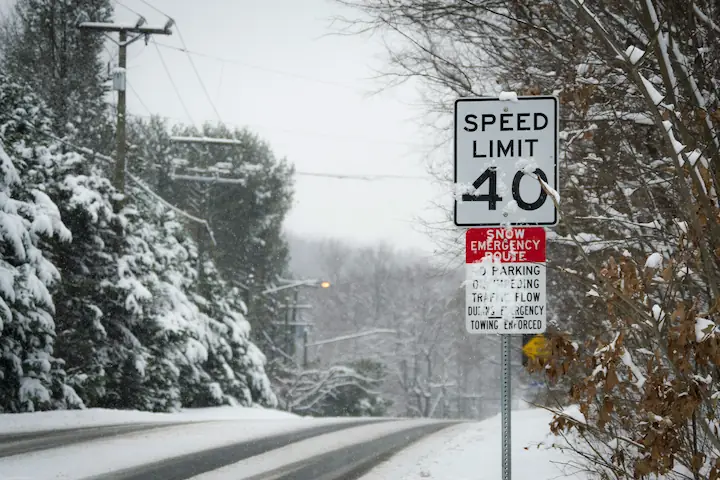Editor's Note: The challenges our cities face are growing, but so is the strength of this movement. Every story we share, every idea we spread, and every tool we build exists because people like you are committed to showing up. Your membership isn’t passive—it’s the momentum that makes change possible.
On a warm July evening, after months of meetings, phone calls, and passionate public debate, Nanaimo City Council abolished all off-street parking mandates for every land use in the downtown core.
For years, minimum parking rules shaped every development decision in the Canadian city — often before anyone even looked at whether the site needed parking at all. The council vote restores a basic degree of local judgment: build what the market and the neighborhood actually require, not what a spreadsheet in the zoning code dictates.
“Downtown is a mobility hub. It’s an area that’s well-served by transit and has improving cycling and pedestrian infrastructure… obviously much residential density and many uses and services and amenities,” Jeremy Holm, the city’s director of planning and development, told council as staff framed the change as consistent with Nanaimo’s City Plan and Transportation Master Plan. With the 8-to-1 vote, developers are now free to decide how much—or how little—parking to include in new projects.
A Long Time Coming
The policy shift didn’t spring from city hall alone. It came after months of on-the-ground organizing by advocates like Strong Towns Nanaimo. Michael Bassili, who detailed the campaign on Strong Towns’ Bottom-Up Shorts podcast, described the vote as the payoff for concentrated community outreach.

“The desire that we had, that the community had, was to literally put people over parking. Nanaimo… has been fundamentally built for vehicles… we have an overabundance of storage for cars, not enough storage for people,” Bassili said on the episode.
He explained the argument the group took to council and the public: parking mandates aren’t neutral technical rules — they’re a default design choice that shapes costs and form.
“[In the] Nanaimo region, rents are through the roof, and it's quite painful for a lot of people living here. And what became obvious when we spoke to developers, architects, small and large, was that when they receive a site, the first consideration they make is, where am I going to put all of this parking?”
Bassili spelled out how the rules worked as an economic chokehold. “City mandates… roughly 1.62 stalls per housing unit… if someone owns a normally sized single family home lot... and they want to turn [it] into a duplex… you need between six and eight parking stalls… which is preposterous... roughly… about $100,000 per stall underground,” he told listeners.
Those figures aren’t abstract. Bassili gave two local examples that helped convince councillors this was a problem that deserved a fix: a proposed downtown daycare that “was on your desk and it died” because of parking rules, and a small business owner who could not open a café downtown because “the city told Phil that if you wanted to open his cafe, he would need about 30 parking stalls” — an impossible requirement on a triangular lot and a non-starter for a small operator.

“Here’s a small, normal building with 20 units … he was talking about his frustrations with trying to fit this… around the astronomical parking requirements downtown… where transit already exists… this should be an easy win,” Bassili explained.
The fundamental arbitrariness and high costs of parking mandates created a shared frustration among local business owners, housing developers, and residents. Strong Towns Nanaimo leveraged this broad base of stakeholders—who recognized how subsidizing parking drives up costs and limits growth—to build the unified voice that pushed the reform across the finish line.
What’s Next For Nanaimo?
Removing parking minimums is not a silver bullet for housing affordability, nor an invitation to reckless development. It is, rather, a targeted policy adjustment that removes a predictable cost and barrier to modest, context-appropriate housing — duplexes, triplexes, infill and small apartment buildings in places already served by transit and services.
Strong Towns Nanaimo framed the reform as a practical, local step: freeing up small lots for more homes, lowering construction costs, and giving developers the flexibility to respond to real demand.
The city’s planning staff and consultants are not treating the vote as a final answer. Council has asked staff to fold this change into a citywide parking strategy and a consultant review of on- and off-street capacity. As Urban Systems planner Dan Casey told councilors, “Parking is a broad-ranging subject matter… we do think there’s some opportunity through parking-related regulation that we can actually sort of start to reach some broader City policy objectives… not strictly parking itself, but areas around housing affordability, environmental sustainability, health and well-being.”

You Don’t Have To Do It Alone
Big wins like Nanaimo’s happen when neighbors team up.
→ You experience your city every day.
→ You see its struggles.
→ You know what your community needs to thrive, but you need help to make change.
Through the Strong Towns Local Conversations program, we nurture and support groups like Strong Towns Nanaimo, helping them connect with other advocates, access resources, and take a measured, local approach to change. And when those changes happen, we celebrate right alongside them.
If you’ve been looking for a way to take action in your city, you don’t have to do it alone. Join or start a Local Conversation and see what’s possible when neighbors work together.





